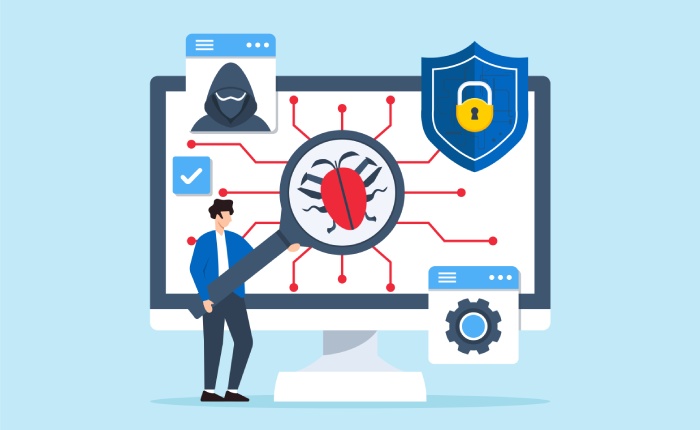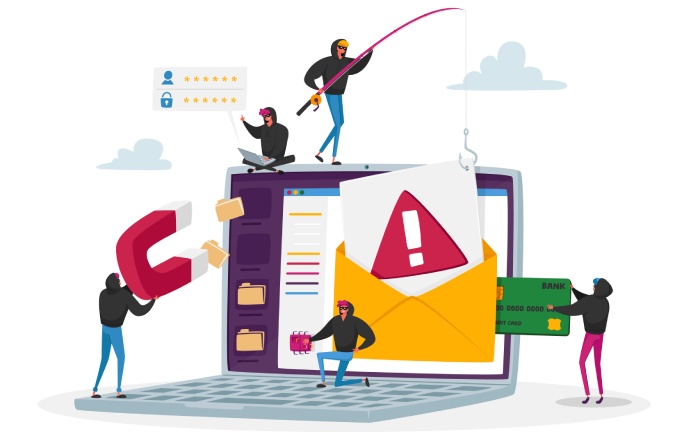|
Page metadata |
|
|
Page Title |
7 Commonly Overlooked But Crucial Security Threats That You Might be Ignoring as Well |
|
Meta Description |
Most businesses will have the cyber security basics down, but there’s many overlooked cybersecurity threats that business leaders mightn’t even be aware of. |
Cyber-crime is a lucrative business and is becoming more prevalent year-on-year, with estimates suggesting that cybersecurity breaches could cost the global economy over $10.5 trillion by 2025.
It’s safe to say that protecting your organization against cyber-crime should be a top priority. However, many businesses struggle to treat cyber security like the business-ending threat it can all too easily become.
Most businesses will enforce the use of some form of malware protection and the use of two-factor authentication, but there are several commonly overlooked – but crucial – cyber security threats that many business leaders aren’t using, or might not even be aware of.
1. Not acknowledging that you’re a potential target
If there’s one thing you take away from this article, it should be that any business – regardless of its size, industry or turnover – is a potential security target.
Startups and SMEs are often most susceptible to this line of thinking; they may feel like they’re less attractive to cyber criminals due to their small size or lower earnings, or they might lack the in-house resources and knowledge to be fully aware of their vulnerabilities.
However, it’s important to realize that cyber threats face organizations of all sizes and that immediate financial gain isn’t necessarily always the objective – information and sensitive data is just as valuable and both will be held by virtually all companies.
Acknowledging that your business is a potential target for a breach is the first and most important step to developing a robust cybersecurity plan and defense. Although cyber insurance is a great asset, prevention is always better than the cure!
2. Treating cybersecurity as an IT-only issue
Unfortunately there’s still a tendency from many business leaders to view cybersecurity as an issue that’s entirely the responsibility of their IT departments instead of seeing it as something which can, and does, affect every member of their organization.
Many cybersecurity breaches are caused by human error. With the average cost of a data breach estimated to be in the region of $4 million dollars, it’s something everyone should be taking seriously.
That, plus the fact that many people are now working either fully remotely or as part of a hybrid model, means that it’s more important than ever that each individual in a business is properly trained in basic cyber security best practices.
In essence, solid cyber security training is a risk mitigation exercise for your business, and the single most effective way to reliably protect your company or organization from breaches.
3. Not considering physical threats as well as digital ones
This one really is overlooked! It can be easy to think of cybersecurity as a digital issue only, but the greatest antivirus software or most robust cyber security threat modeling processes in the world won’t stop someone from breaking into your offices and making off with hard drives full of data.
Ensuring your data, devices and systems are all physically protected is just as important as what you do with them online. Where possible, entry to your offices should be controlled by a key or card entry system and windows and doors should remain locked outside of business hours.
More and more businesses are turning to cloud-based solutions for data storage, partly due to their ease of use, but keeping your data in the cloud is also a great way to mitigate against the risk of offline threats – no-one can physically steal your data if there’s no physical storage. At the same time, companies can benefit from cloud cost optimizations tools to make their storage more efficient and reduce unnecessary expenses.
Likewise, ensure that only authorized personnel are able to access your data and devices, and that any third-parties or visitors are accompanied by someone from your business at all times.
One frightening but not uncommon example of malicious parties gaining physical access to an organization’s systems or data is known as ‘tailgating’, where a person will wear a uniform or fake ID to make it look like they should be there and simply walk in through the office behind a group of employees.
Once there, they can take various actions, including the installation of keyloggers – malicious software which records the input of your computer’s keyboard as you type to steal logins, passwords and other sensitive information. Being aware of the physical threats, as well as the digital, will ensure you don’t put yourself at risk.
4. The rise in Bring Your Own Device working habits
Bring-your-own-device (BYOD) policies are growing increasingly common, whether it’s an official part of company policy or a more informal arrangement. With the rise of technology like hosted PBX phone systems and cloud storage, it’s easier than ever to access work on private devices. Unfortunately this is one of the riskiest potential sources of cybersecurity breaches.
It’s easy to see why: most company-owned computers and devices will have antiviruses, firewalls and other protective software installed, but a personal laptop or tablet brought from home may not. Malicious software unwittingly downloaded onto an employee’s USB pen drive and then entered into a networked PC could very quickly spread throughout an entire organization without care.
Therefore it’s vital to have robust and clear policies in place along with regular training for employees on the risks of BYOD to work. A few simple steps to better protect your business such as the use of two-factor authentication and strong passwords can go a long way towards preventing issues.
5. Failing to keep your software regularly updated
Perhaps the single most overlooked threat to your organization’s security is the failure to ensure that your systems and software platforms are kept up to date with the latest version.
Exploiting weaknesses in outdated software and programs is one of the most common methods that cyber criminals use to gain access to systems, and addressing security risks is one of the primary reasons that software companies are constantly upgrading and improving their products.
By not keeping your software updated, you’re unnecessarily exposing yourself and your business to risk. Luckily it’s a fairly easy fix, as most security patches can be set to install automatically. However, it’s always worthwhile reviewing this regularly as a matter of data security best practice to make sure everything is as up-to-date as it can be.
6. Lack of training for your employees
Even if you have the most watertight cybersecurity plan possible, up-to-date software and all the cybersecurity tools your budget can afford, the weak link in your business’ digital armor will always be human error.
Phishing attacks, which account for up to 90% of all the cybersecurity breaches, can be an easy trap to fall into if you don’t know what to look out for. Other pitfalls like reusing old passwords or sharing the same password across multiple accounts are likewise all too common.
Fortunately regular, structured employee training on the risks of cybersecurity breaches and what they can do to prevent them is the single most efficient and cost-effective way to protect your business.
7. Not keeping a backup of your data
Always have a backup! Regardless of the industry, all businesses will make use of large amounts of important data and information, from customer data to payroll, call log records, stock inventory and more.
It’s important to view regular data backups as a critical part of any cybersecurity plan, so if anything goes wrong or your data becomes corrupted or inaccessible you have a recent failsafe that you can revert to. Many companies now store much of their information in cloud-based services, which do somewhat help with these risks but aren’t infallible.
Not only will a backup provide a safety net in the event your business is targeted, but they can also help to mitigate against ransomware attacks where a malicious party will attempt to hold your data and information hostage. With a solid, recent backup it removes their leverage and allows you to resume your business relatively uninterrupted.
Key Takeaways
In 2023, a solid cybersecurity plan is a necessity for all businesses regardless of their size or industry. Without one, you leave your organization vulnerable to malicious attacks that can result in substantial losses whether that be financial loss, the theft of sensitive information or the disruption of your trading.
But while most companies will have the basics down there are many overlooked threats that organizations typically fail to address, and cyber-criminals will always seek to exploit any possible blind spots or gaps in a business’ armor.
The good news is that greater awareness, a little preparation and a little action will go a long way towards securing your business, your assets and your employees against cyber-attacks and further help protect your enterprise against potential cybersecurity threats.
Bio:
Jenna Bunnell – Senior Manager, Content Marketing, Dialpad
Jenna Bunnell is the Senior Manager for Content Marketing at Dialpad, an AI-incorporated cloud-hosted unified communications system that provides valuable call details for business owners and sales representatives with features like Dialpad call forwarding. She is driven and passionate about communicating a brand’s design sensibility and visualizing how content can be presented in creative and comprehensive ways. Check out her LinkedIn profile.




